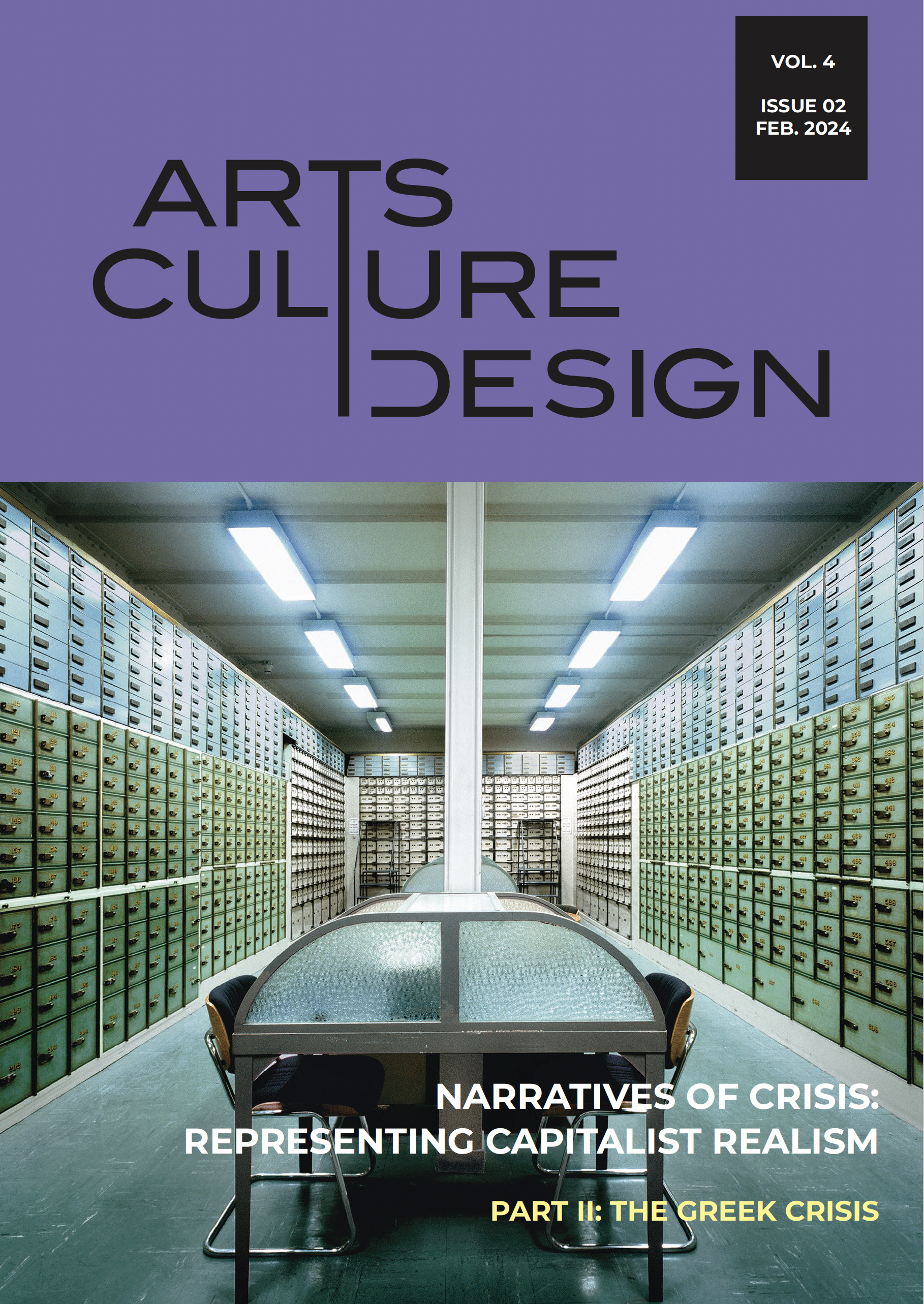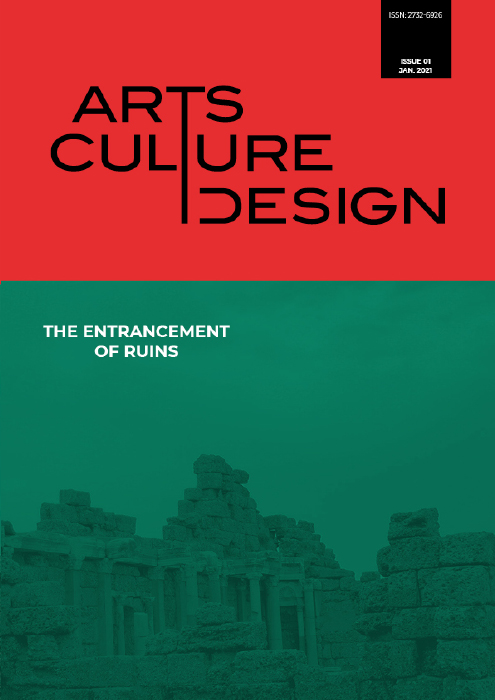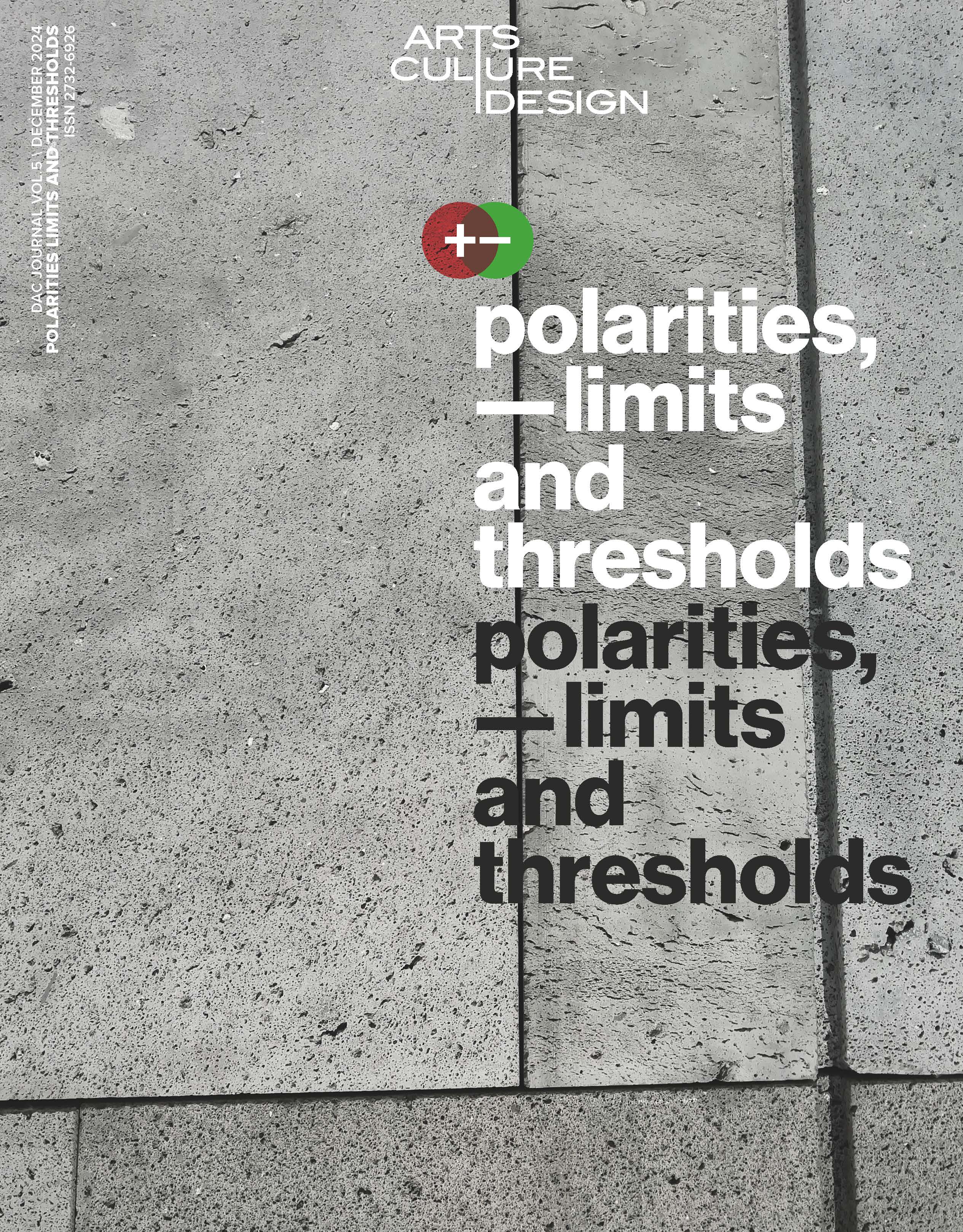NARRATIVES OF CRISIS: REPRESENTING CAPITALIST REALISM PART II: THE GREEK CRISIS

Abstract
Bringing together researchers, theorists and visual artists, the fourth volume of DAC journal, "Narratives of Crisis: Representing Capitalist Realism", aims to provide a platform for discussions and research, which consider various aspects of the visual and its implication to both ideological formations and cultural forms related albeit not limited to the notion of crisis. The special issues (4:1, 4:2) are, in a way, a continuation of previous, relatively recent projects which the guest editor, Dr Penelope Petsini, has curated or organised, and all invited contributors have been involved in: The group exhibitions "Capitalist Realism: Future Perfect" and "Capitalist Realism: Past Continuous" (2018-19, held at MOMus-Thessaloniki Museum of Photography and MOMus-Center of Experimental Arts, respectively), the eponymous book (University of Macedonia Press, 2018), as well as the conference "Representing Capitalist Realism: Crisis, Politics and the Visual" (23-24/11/2018, MOMus-Thessaloniki Museum of Photography & Rosa Luxemburg Foundation). Starting from this point, the issues aim to offer a comparative charting of the crisis discourse by adopting an inclusive definition of the term derived from new scholarship and the concept of "Capitalist Realism" as introduced by British theorist Mark Fisher: an ideological framework for perceiving capitalism's impact on politics, economics, and collective consciousness – encompassing both the spheres of economy and culture. Crucially, Capitalist Realism encapsulates the prevalent notion that not only is capitalism the sole feasible political and economic structure, but it has also become nearly inconceivable to imagine a coherent alternative.
Part Two ("The Greek Crisis") is a collection of essays and visual explorations which present the multifaceted dimensions of the Greek Crisis, weaving together threads of cinema, art, literature, architecture, politics, and urban life. It includes articles, visual essays, portfolios and a review by: Anna Poupou; Nikolas Ventourakis; Depression Era collective; Paraskevi Kertemelidou; Maria Paschalidou; Maria Moira; Io Chaviara; Ioanna Barkouta; Yannis Karpouzis - Yorgos Karailias - Yorgos Prinos - Pavlos Fysakis (Grossraum); Myrto Marini; Dimitris Kechris.
Article Details
- How to Cite
-
Petsini, P. (2024). NARRATIVES OF CRISIS: REPRESENTING CAPITALIST REALISM : PART II: THE GREEK CRISIS. Design/Arts/Culture, 4(2), 10–19. https://doi.org/10.12681/dac.37249
- Section
- Editorial

This work is licensed under a Creative Commons Attribution-NonCommercial-ShareAlike 4.0 International License.
The copyright for articles in this journal is retained by the author(s), with first publication rights granted to the journal. By virtue of their appearance in this open access journal, articles are free to use (with the exception of the non-granted right to make derivative works) with proper attribution for non-commercial uses (licence Creative Commons 4.0). EKT/NHRF retains the worldwide right to reproduce, display, distribute, and use articles published in DAC in all formats and media, either separately or as part of collective works for the full term of copyright. This includes but is not limited to the right to publish articles in an issue of the Journal, copy and distribute individual reprints of the articles, authorize reproduction of articles in their entirety in another EKT/NHRF publication, and authorize reproduction and distribution of articles or abstracts thereof by means of computerized retrieval systems.
DAC journal considers all submitted artwork on the condition author(s) confirm that third-party intellectual property rights are not violated in any way.
Author(s) are responsible for securing permissions to publish copyrighted material, such as photographs and other artwork and for paying any fees involved. Production of an article will not begin until the editor has received all relevant permissions.
The copyright for published articles in Design | Arts | Culture is retained by the author(s). By virtue of their appearance in this open access journal, articles can be used freely, with proper attribution, for educational and other non-commercial purposes.





